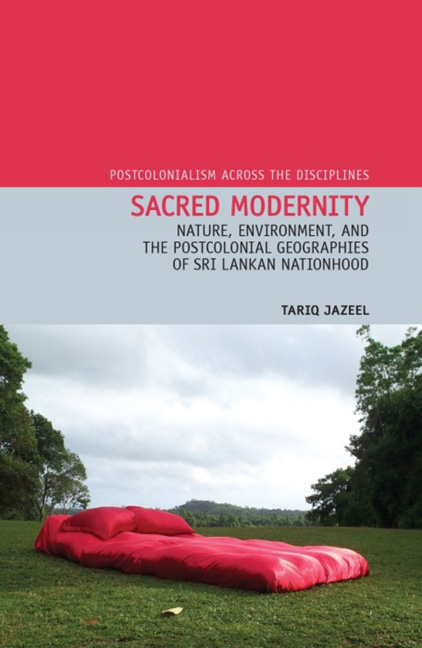Book contents
Conclusion: Sri Lankan Nature as Problem Space
Summary
Not long ago, I boarded a Sri Lankan Airlines flight at Katunayake International Airport in Colombo, bound for London Heathrow. I had been on a short visit from the UK, one of the aims of which was to discuss draft sections of this book with colleagues and friends in Colombo. The politics of Sri Lanka's nature was very much on my mind. It was the front cover of the Sri Lankan Airlines in-flight magazine, Serendib, that first caught my attention: a high-resolution photograph of a wild leopard in Ruhuna National Park drinking from a water pool. Beneath was a list of features inside the magazine, which, in w hat seemed a striking and fortuitous coincidence, read like a partial reflection of the contents of this manuscript. As well as a feature on leopard spotting in Ruhuna, there was an article on Geoffrey Bawa's garden retreat Lunuganga, another on tropical modern architecture, as well as a feature on Sri Lanka's network of national nature reserves. There were more nature pieces as well, including a feature on the wildlife photographer Chitral Jayatileke, and a guide to Blue Whale watching in Sri Lanka.
I should not have been surprised by Serendib's contents. As I stressed in the introduction to this book, nature is something of on obsession in Sri Lanka. Like most in-flight magazines of national air carriers, the magazine seems to take as one its aims the promotion of Sri Lanka to tourists and travellers alike. Sri Lanka's wildlife, nature, and its tropical environmental aesthetics - as the Editorial to that issue put it, the ‘harmony that exists in [its] nature’ (Peaple 2009: 4) - are some of the country's most marketable and alluring assets. And accordingly Sri Lanka makes strong claims about the history of its natural assets and the harmonizing aesthetics they afford. For example, the title of the feature in Serendib on the country's network of nature reserves asks, with some rhetorical panache: ‘Sri Lanka's Wildlife Parks: Were these the world's first wildlife reserves?’ In answer to this question, the piece begins with a familiar legend in Sri Lankan wildlife and conservation discourse…
- Type
- Chapter
- Information
- Sacred ModernityNature, Environment and the Postcolonial Geographies of Sri Lankan Nationhood, pp. 166 - 170Publisher: Liverpool University PressPrint publication year: 2013



